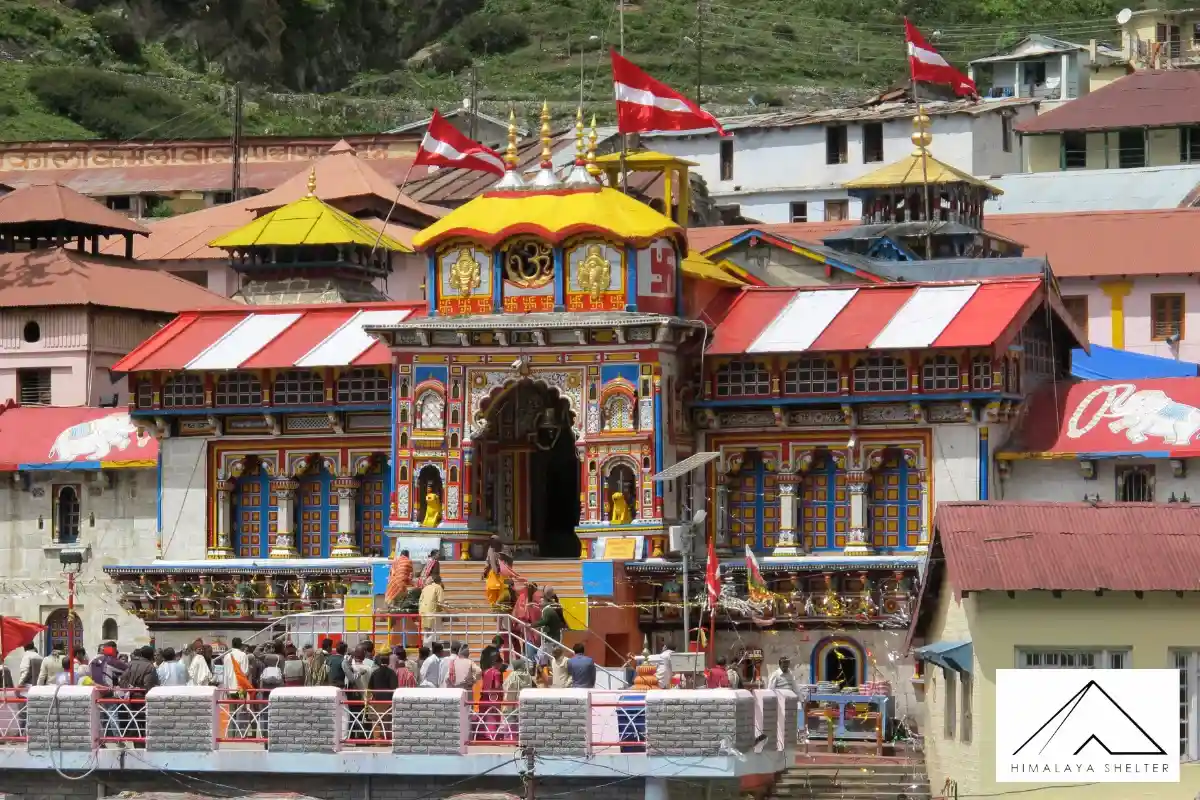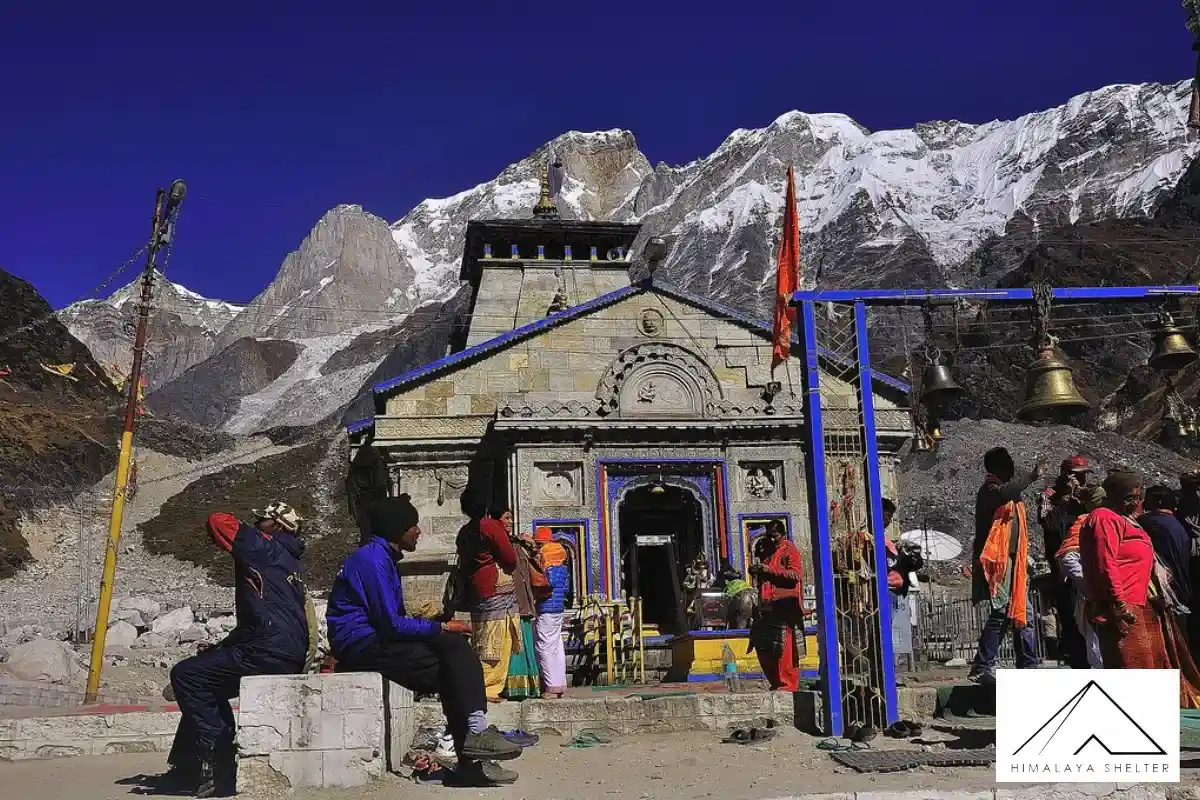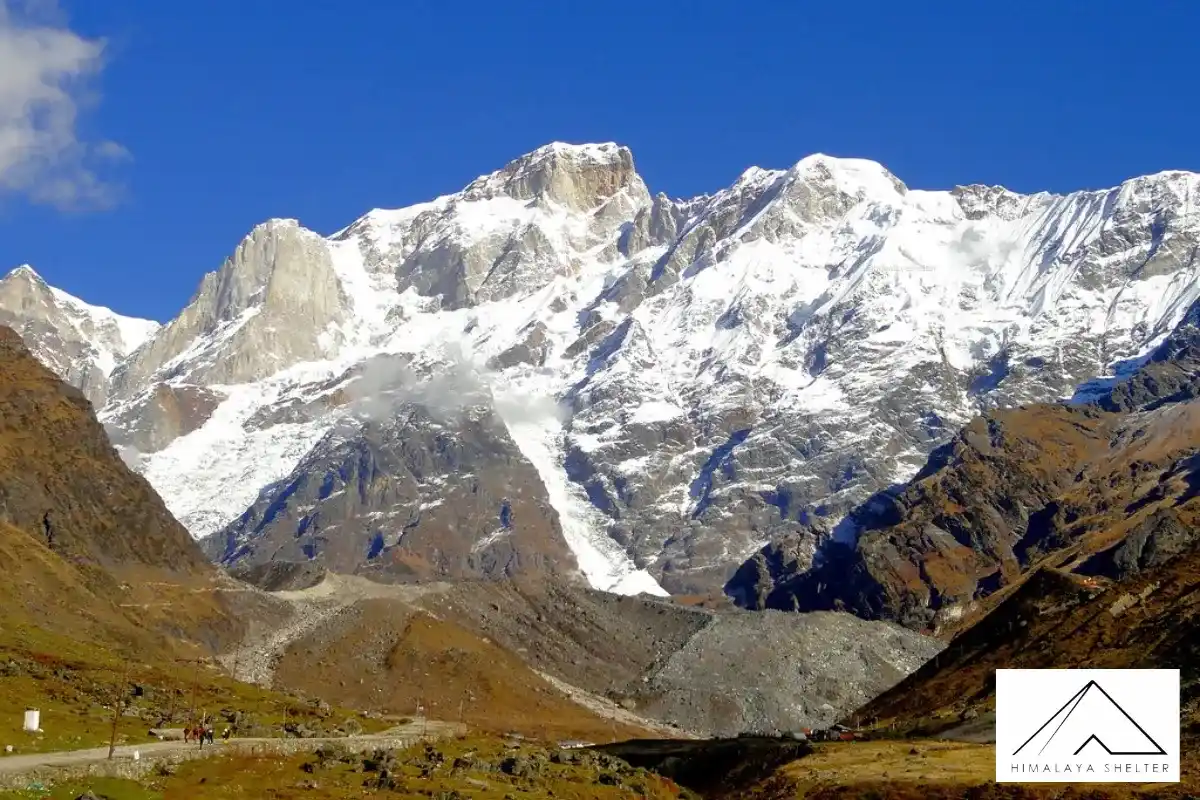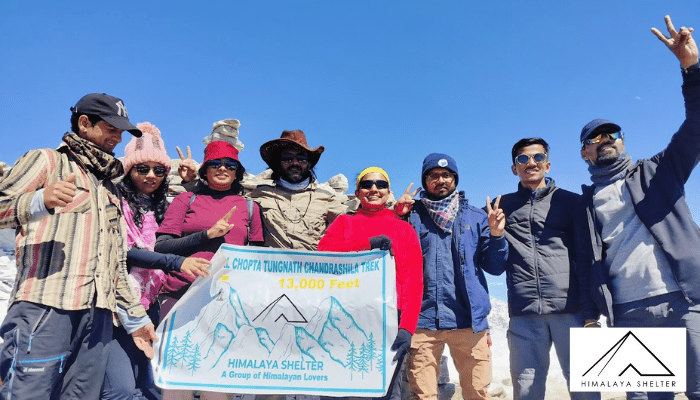
Do Dham Yatra: Kedarnath ji and Badrinath Ji Yatra
TREK DIFFICULTY
Moderate
TREK DURATION
6 Days
HIGHEST ALTITUDE
11,755 feet | 10,279 feet
GROUP SIZE
12
TREK DISTANCE
18 Km
BASECAMP
Kedarnath and Badrinath | Uttarakhand
BEST TIME
May to June and September to October
PICKUP POINT
Dehradun (Prince Chowk)
Do Dham Yatra (Kedarnath & Badrinath) Overview
Do Dham Yatra is one of the most important pilgrimages in India where the religious people attend the sacred temples Kedarnath and Badrinath in Uttarakhand. The trip is a combination of stunning views, snow-white mountains, traditional values, and inner peace.
Kedarnath is a place of worship of Lord Shiva, and is located at a height of 3583 meters and is among the twelve Jyotilingas. The temple is situated in a grandiose and calm location, the Kedarnath peaks, which is dramatic. Badrinath, which is devoted to Lord Vishnu, is located on the banks of the river Alaknanda at the height of 3300 meters. The temple is bright colored and is surrounded by the Neelkanth peak and appears like a painting of god. The town is quiet and is full of spiritual energy. The pilgrims go to Tapt Kund, Mana Village and the serene valleys around the temple. Badrinath is the representation of purity, compassion and divine blessings. The Kedarnath -Badrinath trip offers a combination of nature and faith in ultimate combination.
Commencing from the Holy town of Haridwar, Do Dham Yatra takes you through two of the most sacred places in Uttarakhand, “ Kedarnath and Badrinath”. Perched in the Garwhal Himalayas at an altitude of 3,583 mts Kedarnath is the worship place of Lord Shiva and Badriath is dedicated to Lord Vishnu. They both are a part of Chota Char Dham whereas Kedarnath is one of the 12 Jyotirlingas and Shiva is worshipped here in the form of ‘Hump of a Bull’. Badrinath at an altitude of 3,133 mts was established in the 8th century by Adi Shankaracharya and is believed that Lord Vishnu meditated here.
To reach Kedarnath one has to go through a challenging trek of 19 kms from Gaurikund with river Mandakini flowing alongside the trail offering breathtaking views of meadows, waterfalls, and snow clad peaks. Known as the protector of Kedarnath during winters Bhairav Nath temple dedicated to a fierce manifestation of lord Shiva is also accessible by a 1.5 kms trek from the main temple offering a magnificent view of the Kedarnath Valley. Badrinath along the banks of Alaknanda River is accessible by vehicle and is a brisk walk to the temple showcasing the majestic Neelkanth peak and surrounded by Nar and Narayan Peaks. The Black Granite Idol of Lord Vishnu is worshipped at the temple. Prior to visiting the temple devotees take a dip at the Tapt Kund(hot springs) believed to hold medicinal values. One can also explore the last Indian village ‘Mana’ before the Tibet border with its mythological importance and is the last place where river Saraswati is visible before disappearing. Vyas gufa where Sage Ved Vyasa is believed to have written Mahabharata is also accessible from Mana.
History Of Do Dham Yatra (Kedarnath & Badirnath)
Kedarnath Temple is considered to have been built by the Pandavas. On the basis of the legend, the Pandavas requested forgiveness of their actions. Shiva did not want to encounter them, and thus disguised as a bull and concealed himself in the Himalayas. On his discovery he buried himself into the earth, and abandoned his hump at Kedarnath. This mound developed into the holy Jyotirlinga that is revered to date.
Badrinath Temple devoted to Lord Vishnu also has a rich history. Lord Vishnu is believed to have spent thousands of years in the icy Himalayas meditating and Goddess Lakshmi was incarnated in the shape of a Badri tree to secure his protection. The site was later a major spiritual learning and meditation center.
Day 1: Haridwar/Dehradun - Guptkashi/ Sonprayag
Day 2: Guptkashi/ Sonprayag - Gaurikund- Kedarnath
Day 3: Kedarnath – Gaurikund - Sonprayag / Guptkashi
Day 4: Phata to Badrinath
Day 5: Badrinath to Karnaprayag
Day 6: Karnaprayag to Haridwar/ Dehradun
You are in the right place if you are planning your Do Dham Yatra (Kedarnath and Badrinath). Book your trip with Himalaya Shelter and get the best services. Here we are to prepare the best itinerary for your trip. Everything in the trip will be taken care of by our supporting staff.
Himalaya Shelter offers the customized services for Do Dham Yatra. You choose the dates and we will plan out the whole itinerary, especially curated for you. You can get customized dates, stays, and meals. We can also work on special requests related to treks and trips. Our company deals with small groups to provide a personalized trekking and travel experience.
- Holy Tour of Two Temples
Two of the temples can be seen during a single tour. In this pilgrimage you have an opportunity to get blessed by Lord Shiva at Kedarnath and Lord Vishnu at Badrinath. These temples are of varying vibrations though very energetic.
- Spiritual Atmosphere
The two shrines are famous for their high spiritual vibrations. They have a divine atmosphere where the peaceful environment, constant chanting, bells, and incense raise the mind and soul. Every moment in these locations feels special.
- Rich Mythology
Each of the locations of the Yatra is linked to Mahabharata, Purana tales and deeds of Adi Shankaracharya. It is like a walk through living mythology. The architecture and folklore makes this trip extraordinary.
- Good Accessibility by Better Roads and facilities.
The Yatra is accessible to people of all ages unlike in the ancient times because the route is well developed with roads, helipads, hotels, food stalls, and support services. You can either trek to Kedarnath or can take the air service. Meanwhile, Badrinath temple is connected via road.
- Trek To Kedarnath
On the whole trip, you only have to trek to Kedarnath temple. It is a 16km uphill trek. This trek can be easy to moderately difficult. But there are services like ponies and palkis to reach the temple.
- Drive to Badrinath.
There is a good motorable road connecting Badrinath although the route passes through mountainous steep and sharp roads. It can be a bit difficult to drive if the person is driving in the mountains for the very first time.
- Altitude
Both temples have a good altitude of over 3000m. This is an average height for Himalayan treks. However, if the trekker is new to the Himalayas then he can get AMS. He can get fatigue or headache especially in Kedarnath.
- Weather Conditions
Even if you are visiting the temple in summer, nights can be cold. You can witness snowfall even in May or September. Rains are also a big problem. It is essential to take warm clothes and waterproof layers with one.
- Do Dham Yatra In May & June
The temples are open in May and this is when one should plan the trip. It is pleasant weather and the snow is melting. The trails to Mana become accessible. Days will feel warmer but the nights can be cold.
- Do Dham Yatra In July & August
During the monsoons, the temples are open. But this is not a good time. Landslides in these areas are very likely. You must not make plans to do Dham Yatra. The paths are extremely muddy and wet. It may cause the roads to be washed away by excessive rains.
- Do Dham Yatra In September & October
Autumn is also a good time for your Do Dham Yatra. The weather has become very cold but the daytime is manageable. The views are beautiful and there will be less crowd. You should prepare yourself for sudden snowfall.
- Delhi To Dehradun / Haridwar: You can take a direct flight, train or bus to Dehradun.
- Dehradun / Haridwar To Sonprayag / Guptkashi: Look for direct buses to Sonprayag from Dehradun or Haridwar.
- Songprayag / Guptkashi To Gaurikund: Look for the shared taxi services for Gaurikund.
- Guptkashi To Badrinath: You can look for direct buses or you can hire a taxi from Guptkashi to Badrinath.
- Take Blessings in Kedarnath Temple
The highlight of the Yatra is visiting the ancient Kedarnath Temple that is among the twelve Jyotirlingas. Take time to take in the mighty spiritual force of the temple, the singing and the snow-white mountains which outshine around. Join the morning or evening aarti when the bells and mantras sound makes an inimitable sense.
- Visit Sacred Badrinath Temple
Go and experience the architecture and spiritual ambience of the Badrinath Temple. When visiting the Shayan Aarti or Abhishek Puja, one gets closer to the god. After Badrinath visit, you can go to Mana village.
- Visit Bhairavnath Temple
There is Bhairavnath Temple near Kedarnath which is devoted to Bhairav Baba. The panoramic view of the entire valley of Kedarnath is amazing and is available due to the short climb.
Get a backpack (50L) with a good support and a small day hike bag (20L). Now pack a pair of thermals (upper & lower). Get 4 t-shirts and 2 trekpants. Pack a fleece jacket and a padded jacket. Now get a rain jacket. Stuff a beanie of wool, suncap and gloves. Buy trekking shoes and sandals for the guest houses. And now put your toiletries and a towel. Keep some first aid supplies and money.
Travel Tips & Safety Guidelines
- Prepare Yourself
Not all people can easily travel to mountains without experiencing any difficulties. Well, in case you are new to mountains then do some walking and jogging. You should also prepare yourself mentally for the mountains.
- Stay Hydrated
Sip water on the trip regularly. Do not consume too much water because you will not see toilets everywhere. Kedarnath is a long route and one should walk slowly and in a gradual manner and should also keep hydrated. On the hiking, you are also free to have short breaks.
- Check Weather Conditions
Before making the plans of the trip of Do Dham Yatra, always ensure that you have checked the weather conditions. It will assist you in packing and preparing. Always have a spare day with you since the weather may be very problematic sometimes.
- Respect The Nature
The temples are located at very beautiful locations. Respect nature and do not throw garbage. Pack your lunchbox and avoid throwing anything on the trail. Do not disturb the wildlife and follow the temple rules and local authorities.
Day 1: Haridwar/ Dehradun - Guptkashi/ Sonprayag
Drive: 220 kms
Altitude: 1319m
Gather at the given location for the pickup. Once the pickup is done drive towards Guptkashi/ Phata which is a 220 kms drive and takes around (7-8 hrs).Enroute witness the confluence of Alaknanda and Bhagirathi at Devprayag that forms the Holy Ganga. After spending some time clicking photographs continue the journey towards Guptkashi/Phata. Reach by evening have dinner and overnight stay at the Hotel.
Day 2: Guptkashi/ Sonprayag - Gaurikund- Kedarnath ji
Drive: 16 kms+5kms (shared taxi)
Trek: 19 kms
Altitude: 3583m
Today will be the most challenging day of this yatra ,we will have an early breakfast and drive towards Sonprayag. From Sonprayag hire a shared taxi that will take you to Gaurikund the starting point for the Kedarnath ji trek. The trail passes through scenic views of mountains, forests and waterfalls. It is a strenuous trek with steep inclines and declines. If you want you can hire a mule or a palanquin(Doli) at your own expense. The trek will take around 7-8 hours depending on your physical fitness. Once you reach Kedarnath you will be awestruck by the blend of spirituality and the natural beauty this place has to offer with Mandakini river flowing alongside the trail and Kedar Dome in the background.
Day 3: Kedarnath ji – Gaurikund - Sonprayag / Guptkashi
Trek: 19 kms
Drive: 5 kms
Altitude: 3583m
After early morning darshan and pooja at Kedarnath Temple trace your steps back to Gaurikund. Once you reach Gaurikund hire a shared taxi ti Sonprayag. From Sonprayag our representative would pick you up and drive you to the hotel.Check inn at the hotel have dinner and overnight stay at the hotel in Guptkashi/Phata.
Day 4: Phata to Badrinath
Drive: 200 kms
Altitude: 3300m
In the morning after breakfast drive to Badrinath ji one of the 12 sacred Jyotirlingas. It is a 200 kms drive to Badrinath and on the way you will pass through Joshimath The Winter Abode of Lord Badrinath Ji when the main shrine at Badrinath is closed the idol is carried to the Narsingh temple at Joshimath. Once you reach Badrinath ji check inn at the hotel and overnight stay at Badrinath.
Day 5: Badrinath to Karnaprayag
Drive: 120 kms
Altitude: 1451m
After performing pooja and rituals at Badrinath ji drive towards Mana also famously known as the “First Village of India”. At Mana you will witness a unique culture and traditions of the residents of Mana and it is one of the spots where the holy Saraswati river is visible. After spending some time at Mana soaking in the cultural and natural of this place we will be driving to Karnaprayag the last destination of this Yatra. Dinner and overnight stay at Karnaprayag.
Day 6: Karnaprayag to Haridwar/ Dehradun
Drive: 190 kms
Today marks the last day of this yatra, after having breakfast start your journey towards Haridwar which would take around 7 hours. Enroute you can visit the famous Dhari Devi temple and witness the origin of Ganga at Devprayag which is the confluence of Alaknanda and Bhagirathi rivers.after spending some time at the picturesque spot continue your drive towards Haridwar. Once you have reached Haridwar you will be dropped at the railway station.
Our treks are specially designed by the experienced team at Himalaya Shelter, taking you on an adventure of a lifetime all while making you connect not only with the bountiful nature but also with yourself and with others on the trek with you creating wonderful memories which will last you a lifetime. All Himalaya Shelter treks are guided by experienced Trekkers having vast knowledge and experience of the region, providing with insightful information and stories pertaining to the region’s flora and fauna and the history of the region whilst the trek. It is safe to say that on successfully completing the trek, one will gain tremendous insight and experience along with lifetime memories.
Trek Inclusions
- Transport support from Haridwar/ Dehradun to Haridwar/ Dehradun (Pick-up location: Prince Chowk, near Dehradun Railway Station Pick-up Time: Around 7:30 am).
- Accommodation – At Base Camp, stay at a local homestay or guest house for one night each, which will give you an insight into the authentic lifestyle of the locals.( INR 5000 per person extra for single sharing throughout the trek )
On Trek stay in a 2-person Vango Halo Pro/A-Shape tent, which is to be shared by two trekkers, built to withstand extreme weather conditions and at the same time making you comfortable after a hard day’s trek. - Camping Equipment – specially designed sleeping bags that can withstand harsh weather conditions, foam mattresses. Other safety gear like microspikes, gaiters, an ice axe, and helmets will be provided.
- Medical Kit – our team will be equipped with an extensive medical kit, which our team is trained and experienced to use. Oxygen cylinders are used after they are thoroughly inspected throughout the Trek. Even campsites have large oxygen cylinders as backups.
- Permission - Forest entry charges for Indian nationals (Additional charges will be applicable for international tourists)
- Meals – Breakfast, packed lunch (on trek days), evening snacks, and dinner will be served. A hearty, delicious, and nutrition-filled Veg meals with egg preparation will be provided throughout the trek. (Jain and Vegan Food can also be arranged on prior notification). There will be a dedicated Kitchen Tent along with a dining tent, which will have a dining table too.
- Our Team – A highly experienced and AMC-certified Trek Leader who will help ensure that the entire trek goes smoothly and safely while navigating the challenging conditions during the trek, and is skilled enough to navigate any medical emergency that can arise during the trek. Local and route guides who are well-versed with the region and provide an in-depth insight into the local customs and knowledge of the flora and fauna endemic to the region. A dedicated Kitchen staff, which includes a Cook, a helper, and other support staff. There will also be porters and mules to carry common equipment.
- Cloakroom - We have a cloakroom facility available for extra luggage. Every trekker is permitted to leave their luggage behind at no charge.
Trek Exclusions
- Personal expenses like tips, personal medicines, phone calls etc.
- Travel Expenses - Travel expenses from your hometown to the mentioned Pick-Up Point are not included in the trek fee.
From the scheduled pick-up spot to the base camp, we have our own fleet of vehicles like Bolero, Innova, Dezire, or Tempo Traveler (12-seater). This is be shared by trekkers for a pre-decided amount. All vehicles are non-AC. - Personal Equipment - Any personal gear like jackets, shoes, cutlery, or backpacks are not included in the trek fee. We recommend renting them from our Rental Store for an affordable fee. This can be pre-arranged to avoid last-minute hang-ups.
- Offloading - We encourage carrying your backpack to get into the true spirit of trekking. However, if needed, you can opt to offload your personal luggage of up to 12 kgs for an additional cost of INR 500 per bag per day.
- Trek Insurance - A mandatory trek insurance fee is charged in addition to your trek fee. Since most medical insurance doesn’t cover adventure activities, trek insurance offers essential coverage, enhancing your safety without a significant financial burden.
- Buffer day on the trek - We have kept a buffer day on the trek to account for any weather-related delay. If this is utilized, you will need to pay an extra amount to your trek leader.
- Anything apart from inclusions
- Please carry a lunch box for a packed lunch/breakfast to avoid using polythene and Aluminium foil.
Keeping the Himalayas clean is our own responsibility. Reduce the use of Plastic when you are in the abode of the Sacred Himalaya. 🌱
The Do Dham Yatra usually opens in April / May.
The Yatra closes just after Diwali around October / November.
No, the temples remain closed in winters.
You can find network connections in temples. The connectivity is low but available.
Yes, you can visit Mana village with Badrinath.
Yes, you can find lots of stay options.
Read More on Do Dham Yatra: Kedarnath ji and Badrinath Ji Yatra
Photo Gallery




Treks by Categories
Treks By Month

Treks By Experience










